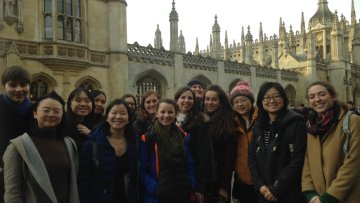Bounds of Minkowski type for finite complex linear groups - the answer to a question of Serre
Abstract
In 1878, Jordan showed that there is a function f on the set of natural numbers such that, if $G$ is a finite subgroup of $GL(n,C)$, then $G$ has an abelian normal subgroup of index at most $f(n)$. Early bounds were given by Frobenius and Schur, and close to optimal bounds were given by Weisfeiler in unpublished work in 1984 using the classification of finite simple groups; about ten years ago I obtained the optimal bounds. Crucially, these are "absolute" bounds; they do not address the wider question of divisibility of orders.
In 1887, Minkowski established a bound for the order of a Sylow p-subgroup of a finite subgroup of GL(n,Z). Recently, Serre asked me whether I could obtain Minkowski-like results for complex linear groups, and posed a very specific question. The answer turns out to be no, but his suggestion is actually quite close to the truth, and I shall address this question in my seminar. The answer addresses the divisibility issue in general, and it turns out that a central technical theorem on the structure of linear groups from my earlier work which there was framed as a replacement theorem can be reinterpreted as an embedding theorem and so can be used to preserve divisibility.



